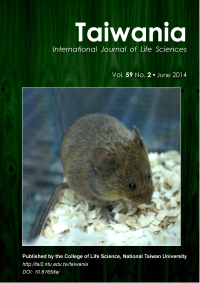Research Paper
Characterization of Anatomical and Physiological Adaptations in Cassytha filiformis L.—An Advanced Obligate Hemiparasite on Morinda tinctoria Roxb.
D. Balasubramanian, K. Lingakumar and A. Arunachalam
Published on: 16 June 2014
Page: 98 - 105
DOI: 10.6165/tai.2014.59.98
Abstract
A study was conducted to understand the host-parasite relationship in terms of anatomical and physiological adaptations in Morinda tinctoria Roxb. and Cassytha filiformis L. Anatomically the haustorium of Cassytha is found to have two parts, the upper haustorium and the endophyte. The former is the portion of a haustorium that lies external to the host organ, whereas the endophyte is the portion of a haustorium that penetrates host tissues. It was also observed that the host organ triggers the dedifferentiation of cortical parenchyma to develop dense cytoplasm, conspicuous nuclei and numerous starch grains and these cells are found to serve as the initials of upper haustorium. The level of Chl b was lower than Chl a and xanthophylls in Cassytha when compared to Morinda. The photosynthetic activity was measured in intact leaves/stems of both the host and parasitic plant using Chl a fluorescence induction kinetics, which revealed that the photosynthetic efficiency was very low in the infected sample as well as in the parasite stem. Over all, the reduction in the photosynthetic efficiency was correlated to the poorly developed PS II complex.
Keyword: Anatomy, Cassytha filliformis, Chlorophyll, endophyte, fluorescence kinetics, hemiparasite, haustorium, photosystem II.


